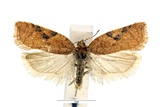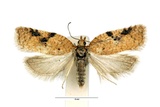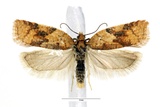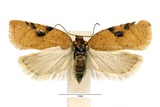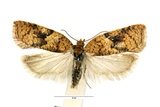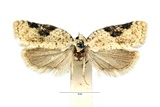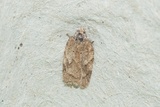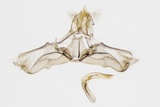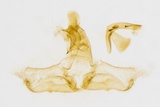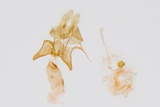Acleris notana (Donovan, 1806) Species
Last modified: Nov. 22, 2025, 2:03 p.m.
A very rare species in Belgium. Can be confused with the more common Acleris ferrugana and therefore it is best to check the genitalia.
The current distribution (after 2004) is based only on individuals that have been checked for genitalia.
Details
- Classification
- Family: Tortricidae > Subfamily: Tortricinae > Tribus: Tortricini > Genus: Acleris > Species: Acleris notana
- Vernacular names
- Oranje boogbladroller (NL), Rusty Birch Button, Tawny Birch Tortrix (EN), Mischwald-Spinnerwickler (DE)
- Synonyms
- Acleris tripunctana (Hübner, 1799), nec (Denis & Schiffermüller, 1775) and Acleris proteana (Guenée, 1845)
- First mention in Belgium
- De Sélys-Longchamps E. 1844. Énumération des insectes Lépidoptères de la Belgique. — Mémoires de la Société royale des Sciences de Liége 2: 1–35. On page 20.
- Status
-
Native
Distribution
Imago
Wingspan 15–19 mm. Very similar to Acleris ferrugana and equally variable, care has to be taken in the identification of these two species and it can only be reliably separated by genital dissection.
Caterpillar
Abdomen light to darker green with small, barely visible warts of the same color or light grey. The head and prothoracic plate are black-brown. Legs black.
Bionomics
The larva lives between spun leaves. The adults hibernate.
The adults come to light.
Flight periods
The adults are on the wing from June onwards and after overwintering reappearing in spring till May.
Observed on
- Host plant (genera):
- Betula
The caterpillars feed mainly on Betula, and less on Alnus.
Habitat
It inhabits deciduous forests, heathland and shrubs with a preference for young deciduous trees in sunny places.
